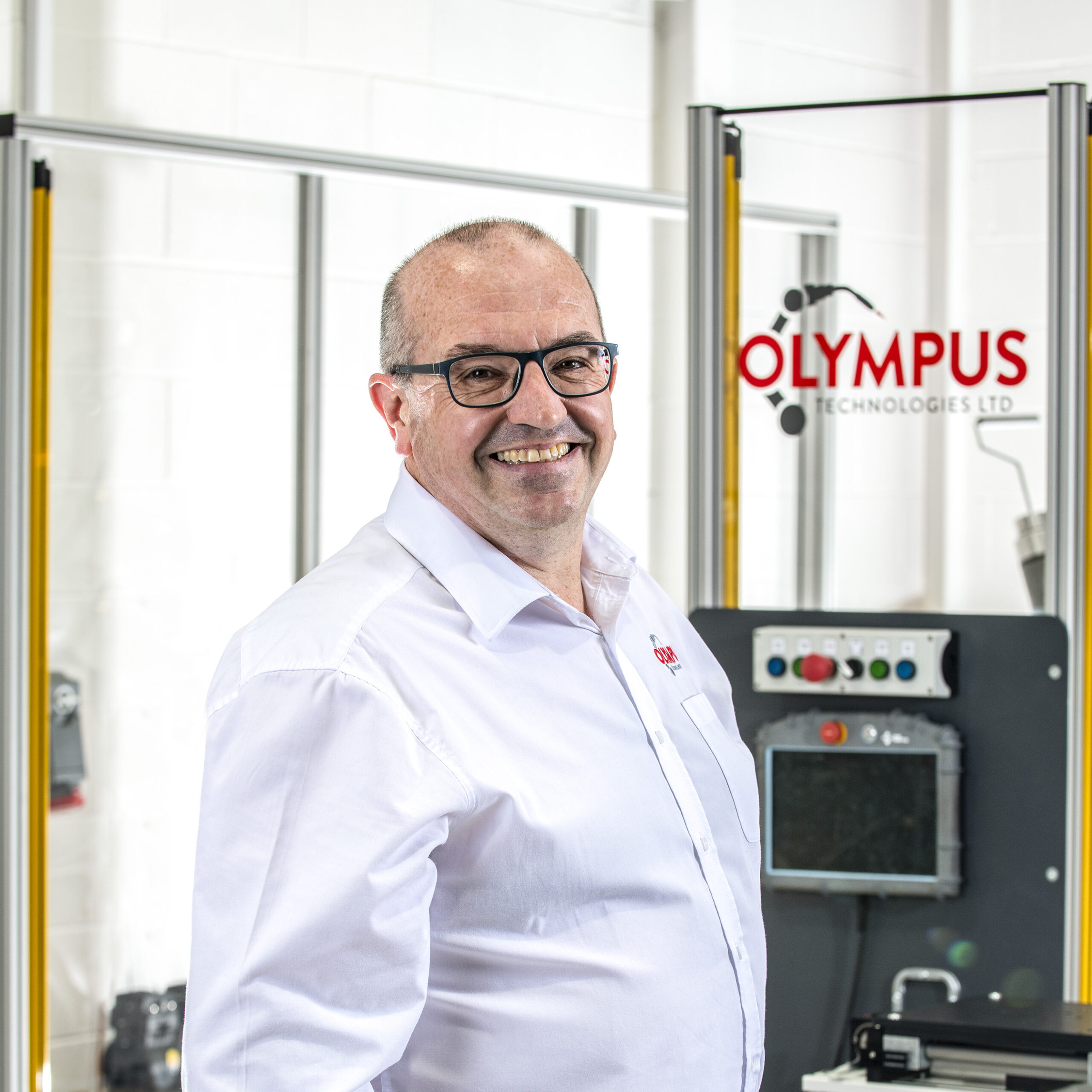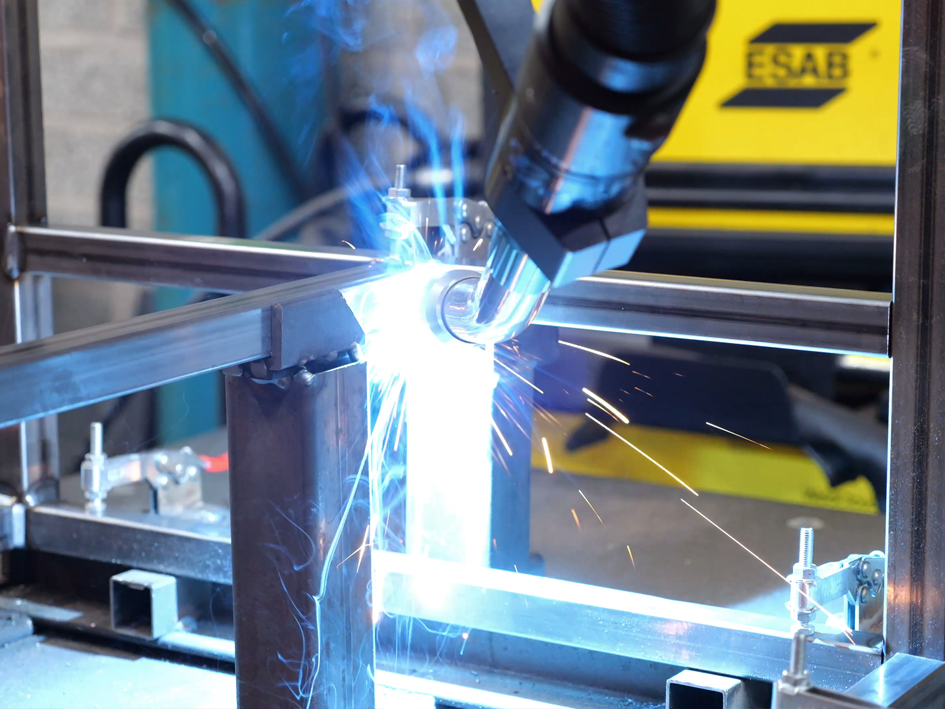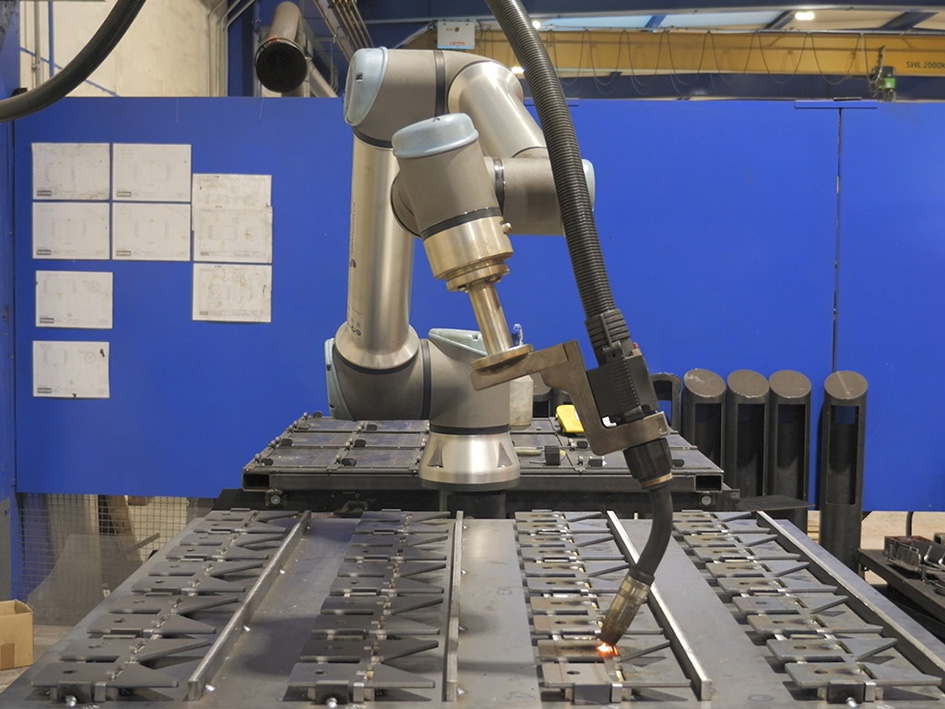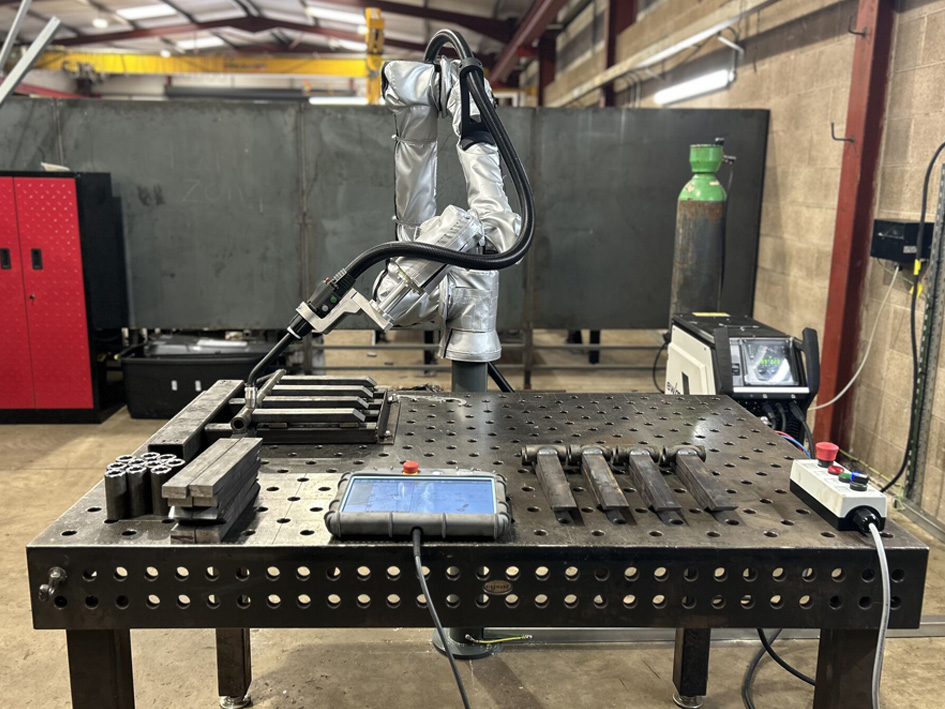Why Automation Matters More Than Ever
As the manufacturing industry advances, the demand for reliable robotic system integration continues to grow. Whether your goal is reducing risk, improving quality, or scaling production, a dedicated press brake tending robot can deliver measurable results. This guide provides an integration checklist for press brake tending robots, helping you plan with confidence and maximise your return on this significant investment.
What Is a Press Brake Tending Robot?
A press brake tending robot is a specialised automation system that supports the machining process of loading and unloading metal sheets into a press brake. By automating this repetitive task, the robot brings both precision and added safety for operators working near heavy equipment.
These solutions are typically programmed with:
- A robot arm or collaborative robot fitted with grippers or suction tools
- Vision technology to detect position and part form
- Built-in safety devices such as light curtains and emergency stops
- Interfaces to link directly with your CNC machine and other machine tools
Whether forming part of a stand-alone robot cell or embedded in an assembly line, these systems can increase efficiency while reducing downtime.
Integration Planning: Aligning Technology with Business Goals
Successful implementation starts with a clear use case and a shared vision of what your facility wants to achieve. Are you prioritising reduced labour cost, improved product quality, or enhanced operator safety? Defining these factors ensures the chosen technology aligns with your strategic focus.
During planning, assess your budget, expected ROI, and timeline. Consider how your investment relates to future scalability, as the best solution is one that adapts to new process requirements over time.
Assessing System Requirements: What You Need to Get Started
Before installation, evaluate how the new system will interact with your current equipment, software, and physical layout. For instance, if robot moves are limited by ceiling height, floor anchors, or rigid barriers, adjustments may be necessary. Also confirm whether your robotics setup can connect directly with machine controls or needs middleware.
Robotic Requirements
- Payload capacity suitable for the material weight
- Reach matching the press brake’s size and motion range
- High repeatability to maintain product quality
Automation & Control Requirements
- Compatibility with CNC, PLC, and related control systems
- Monitoring and diagnostics through reliable software
- Integration with existing devices and plant hardware
Tip: Every facility must follow ISO standards for robotic safety and guarding to ensure operators remain fully protected.
Choosing the Right Robot: Collaborative vs Industrial
The right choice depends on your process requirements and long-term capabilities.
Collaborative Robots
A collaborative robot is best for high-mix, low-volume production where human and robot interaction is frequent. They offer intuitive programming, built-in safety, and reduced implementation complexity.
Adaptive and AI-Enabled Robots
For more complex operations, adaptive robots can adjust in real time using vision, force feedback, or AI. This active adaptation allows them to handle part variability and maintain consistent performance without excessive reprogramming.
Facility Readiness: Preparing Your Production Line
Your facility layout has a direct relation to integration success. A site survey should confirm detail such as cell placement, walkways, and operator access. Consider whether an updated line configuration, added safety fencing, or a new robot cell is required.
Strong planning at this stage improves visualisation for teams and reduces risk during commissioning.
Partnering with a Systems Integrator
A skilled systems integrator turns a concept into a fully functional automation solution. They handle programming, simulation, and mechanical design, ensuring every device and system works seamlessly.
Key benefits include compliance with regulations, professional support, and long-term service agreements that keep your robots maintained properly. At Olympus Technologies, our team offers tailored capabilities to help customers achieve measurable gains while keeping operation simple for every operator.
Common Integration Challenges (and How to Avoid Them)
Even with the best planning, challenges arise. Typical issues include technical mismatches between robots and CNC machine interfaces, insufficient training, and downtime during process changeovers.
Example: One of our customers achieved a 40% efficiency boost after combining an adaptive robot with vision-based monitoring. By involving human operators early and ensuring ongoing training, they reduced errors and maximised efficiency.
Long-Term Success: Maintenance, Monitoring and Scaling
After implementation, ongoing maintenance is essential for sustainable performance. Preventative service keeps equipment functioning properly and reduces unexpected failures.
Best practices include tracking KPIs like uptime, accuracy, and error frequency. Continual operator training builds responsible teams who can troubleshoot effectively. Over time, you can combine additional devices with your robot cell to expand capabilities and adapt to new manufacturing demands.
Conclusion: Smarter Automation Starts Here
A press brake tending robot is more than a significant investment. It is a strategic move toward greater efficiency, stronger safety, and reliable production. By following this checklist and working with the right systems integrator, your facility can unlock the full benefits of robotics while staying competitive in today’s automation-driven industry.
FAQs
How does an integration checklist for press brake tending robots improve safety?
By following an integration checklist for press brake tending robots, you can identify hazards early and design with proper guarding. This approach ensures every operator has safe access to machines while reducing human exposure to moving parts.
What are the main benefits of working with a systems integrator?
A systems integrator streamlines implementation by aligning equipment, software, and control systems. Their capabilities reduce risk, cut cost, and help ensure your robots are maintained properly over time.
When should a facility consider adaptive robots?
Adaptive robots are valuable when the process involves complex part variation or requires active adjustments. If your line needs flexibility in motion, position, or form, these robots provide a future-ready solution.
What factors determine the ROI of a press brake tending automation system?
Key factors include initial investment, cycle time reduction, and reduced labour cost. When the robot brings consistent performance and quality, the long-term benefits outweigh the upfront expense.














